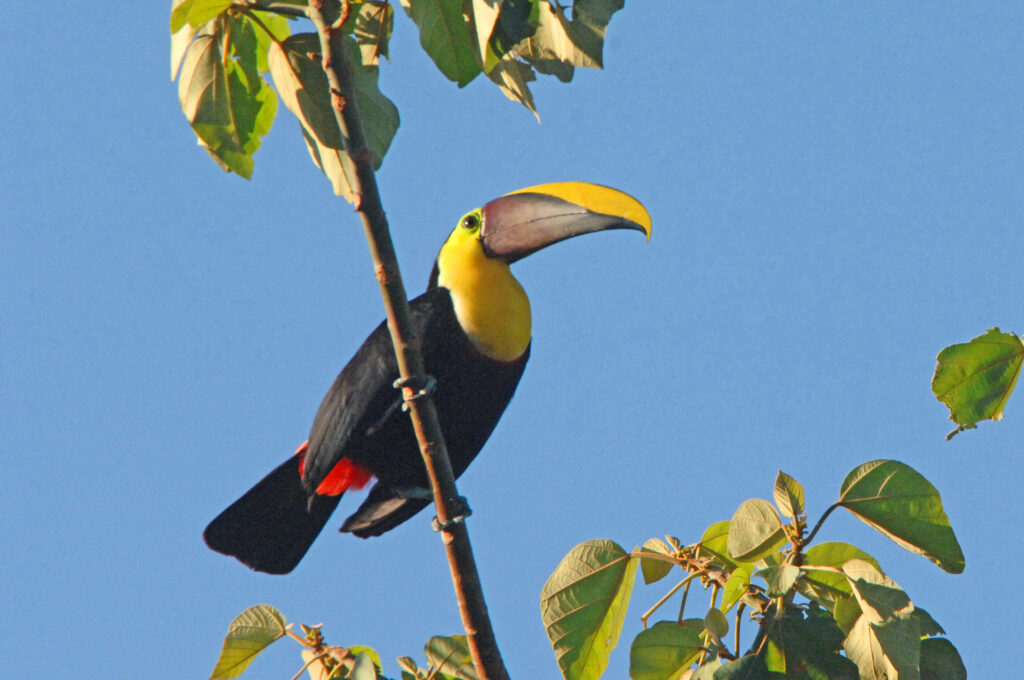
Photo and Commentary ©2023 by Robert Howson
Tuesday, October 31, 2023
When one thinks of the wildlife of the tropics there are two groups of birds that top almost everyone’s list, the parrots and the toucans. And while parrots may be found living in the wild on all continents except Antarctica, toucans are limited to the tropical Americas. The obvious characteristic that sets them apart is their enormous bill. These bills are frequently quite colorful adding to their exotic reputation. The bills are made out of light-weight keratin, similar to our fingernails, and are reinforced with crisscrossed rods for added strength. The serrated edges function as teeth which enable them to tear fruit which makes up most of their diet.
The largest toucan in Central America is the Chestnut-mandibled Toucan shown here. Since it is relatively easy to care for, it is the most frequently kept ‘large-billed’ toucan to serve as a pet in North America. Apparently humans are intrigued by the birds’ ability to toss food into the air and catch it so it slides easily down their throats. It’s been suggested that this hollow, lightweight bill enables the bird to reach fruit which would otherwise be out of reach on limbs too small to support the bird’s weight. While that seems reasonable, their outlandishly large bills do present another problem. How do you preen that spot just behind your neck that demands your attention? And it’s here that cooperation comes into play, for pairs can often be seen sitting next to each other, engaged in allopreening, where they take turns preening each other’s head and neck. What would be impossible for one is easily accomplished by two.
The Message paraphrase of the familiar Beatitude about peacemakers expands it this way: “You’re blessed when you can show people how to cooperate instead of compete or fight. That’s when you discover who you really are, and your place in God’s family.” (Matthew 5:9)
